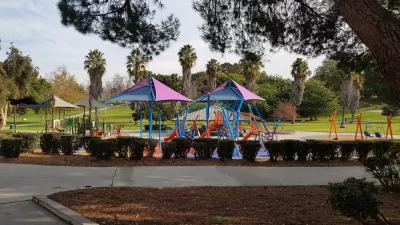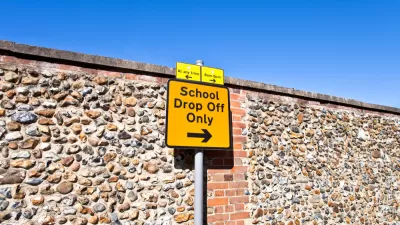Los Angeles Unified School District is in the process of implementing a plan to ensure that at least 30 percent of all campuses include green spaces by 2035.

The Los Angeles Unified School District (LAUSD), California’s largest school district and the nation’s second largest, announced in June that it is using over $229 million in bond money to, among other projects, upgrade facilities and provide sustainable green spaces for students using a greening index to prioritize the campuses most in need.
The greening index combines two measures of need: 1) school site-specific need and 2) community-based need. A school’s green score is based on the percentage of green space on a campus compared with its total area; and a score derived from results of the Los Angeles County’s 2016 Parks Needs Assessment (PNA), a countywide study of the diverse parks and recreation facilities throughout LA County’s cities and unincorporated communities. Prepared by the Los Angeles County Department of Parks and Recreation (DPR), the PNA gathered data to determine the scope, scale, and location of park need in Los Angeles County.
In September 2022, the Los Angeles Board of Education unanimously voted to accelerate and greatly expand efforts to bring green space to all its campuses. The resolution, authored by Board President Kelly Gonez, establishes a minimum standard of 30% green space for all campuses and directs the superintendent to develop a plan to meet the standard district-wide by 2035. Research shows that green spaces on or around a school campus help improve student well-being, physical and mental health, as well as academic performance. Currently, only 16% of LAUSD campuses meet the green space standard of 30%.
As reported by Nadra Nittle, the investments being made by LAUSD are partly the result of activism by students, parents, and advocates to make campuses more sustainable. As some studies have shown, extreme heat makes it challenging for young people to learn and disproportionately affects schools serving communities of color and economically disadvantaged families. School officials are being urged to ensure that all students have access to quality learning environments and take bold actions to greening campuses, reimagining the role that schools can play in advancing sustainability.
FULL STORY: California’s largest school district is spending millions to protect kids from climate change

Maui's Vacation Rental Debate Turns Ugly
Verbal attacks, misinformation campaigns and fistfights plague a high-stakes debate to convert thousands of vacation rentals into long-term housing.

Planetizen Federal Action Tracker
A weekly monitor of how Trump’s orders and actions are impacting planners and planning in America.

San Francisco Suspends Traffic Calming Amidst Record Deaths
Citing “a challenging fiscal landscape,” the city will cease the program on the heels of 42 traffic deaths, including 24 pedestrians.

Adaptive Reuse Will Create Housing in a Suburban Texas Strip Mall
A developer is reimagining a strip mall property as a mixed-use complex with housing and retail.

Study: Anti-Homelessness Laws Don’t Work
Research shows that punitive measures that criminalized unhoused people don’t help reduce homelessness.

In U.S., Urban Gondolas Face Uphill Battle
Cities in Latin America and Europe have embraced aerial transitways — AKA gondolas — as sustainable, convenient urban transport, especially in tricky geographies. American cities have yet to catch up.
Urban Design for Planners 1: Software Tools
This six-course series explores essential urban design concepts using open source software and equips planners with the tools they need to participate fully in the urban design process.
Planning for Universal Design
Learn the tools for implementing Universal Design in planning regulations.
Heyer Gruel & Associates PA
JM Goldson LLC
Custer County Colorado
City of Camden Redevelopment Agency
City of Astoria
Transportation Research & Education Center (TREC) at Portland State University
Jefferson Parish Government
Camden Redevelopment Agency
City of Claremont




























